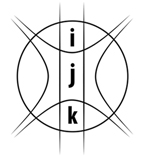2017 (7)
Friday, 29 December 2017 18:33
Towards a Universal Probability Theory, Part II
Written by Mlakár Katalin
Single quantum's and their multitudes' events Contents Single quantum and their multitudes in the two slit experiment Single quantum's and their multitudes' events in the probability theory Appendices After registration, you may ask for a translation of the full text by email.
Sunday, 03 December 2017 19:26
Towards a Universal Probability Theory, Part I
Written by Mlakár Katalin
Introduction Andrei Khrennikov's Contextual Probability and the Two Slit Experiment Quoted Khrennikov: “One of problems was of purely mathematical character. The standard probabilistic formalism based on Kolmogorov’s axiomatics, 1933, was a fixed context formalism. This conventional probabilistic formalism does not provide rules of operating with probabilities calculated for different contexts. However, in quantum theory we have to operate with statistical data obtained for different complexes of physical conditions, contexts. In fact, this context dependence of probabilities as the origin of the superposition principle was already discussed by W. Heisenberg; unfortunately, only in quite general and rather philosophic framework.”1 Contents Khrennikov's contextualism What's next? Feynman and the two slit experiment Appendix ____________________________ 1Andrei Khrennikov, „Contextual viewpoint to quantum stochastics”; https://arxiv.org/pdf/hep-th/0112076.pdf After…
The Ambiguity of Geometric Algebra in the Models of Spacetime Contents 1. Memo 1.1. Multivectors in GA3 1.2. Conjugations in GA3 1.2.1. Clifford conjugation 1.2.2. Pauli conjugation 1.2.3. The role of complex imaginary unit in the Clifford and Pauli conjugations 2. Minkowski spacetime generated in GA1,3 2.1. Bivektor algebra 2.2. Lorentz transformation 3. Spacetime model in classic GA3: the scalar element as a time representation 4. Summary 1. Appendix Pauli algebra and matrices 2. Appendix Gamma or Dirac matrices, Dirac algebra 3. Appendix Lorentz transformation a. Einstein description with coordinates b. Applying hyperbolic functions c. Usage of hyperbolic numbers to describe space time References After registration, you may ask for a translation of the full text by email.
Conjugation concepts in GA3 Contents Memo Involutions: reversion and conjugation in GA3 Reversion Magnitude or modulus Conjugation Comments Appendix Pauli algebra References David Hestenes, „Space–Time Algebra” David Hestenes, „New Foundations for Classical Mechanics” Chris Doran & Anthony Lasenby, „Geometric Algebra for Physicist” Stephen Gull, Anthony Lasenby, Chris Doran, „Imaginary Numbers are not Real — the Geometric Algebra of Spacetime” http://geometry.mrao.cam.ac.uk/wp-content/uploads/2015/02/ImagNumbersArentReal.pdf After registration, you may ask for a translation of the full text by email.
Subjective and unfinished thoughts on GA dimensions In everyday life we ordinarily use the term dimension as spatial size. In sciences, than the mathematics and physics, the term of the dimension is used in a diverse, different sense. Contents Dimension and grade in GA Unit of measurement as dimension Qualitative infinite as dimension After registration, you may ask for a translation of the full text by email.
Sunday, 05 February 2017 20:39
CA, GA and the Two-element Numbers – Secondly
Written by Mlakár Katalin
With Exciting Dénouement Contents Introduction Geometric Algebra of the Plane The Algebra of 3-Space Conclusions Abstract by a quotation „These considerations all indicate that our present thinking about quantum mechanics is infested with the deepest misconceptions. We believe, with David Hestenes, that geometric algebra is an essential ingredient in unravelling these misconceptions.”1 __________________________ 1 See Stephen Gull, Anthony Lasenby, Chris Doran, „Imaginary Numbers are not Real — the Geometric Algebra of Spacetime”; http://geometry.mrao.cam.ac.uk/wp-content/uploads/2015/02/ImagNumbersArentReal.pdf After registration, you may ask for a translation of the full text by email.
Friday, 06 January 2017 19:06
The Clifford Algebra, the Geometric Algebra and the Two-element Numbers
Written by Mlakár Katalin
Abstract The geometric algebra (GA) is a Clifford algebra (CA) of a vector space over the field of real numbers. A similar concept of complex numbers can be derived from the GA. It is very instructive to compare, as the various authors deduce one of the two-element numbers from CA, or from GA. Contents David Hestenes Garret Sobczyk Doran-Lasenby Stefan Ulrich Summary After registration, you may ask for a translation of the full text by email.



